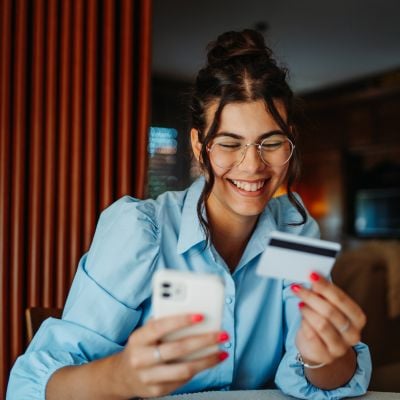The investment potential of fashion
Researchers have begun to explore the investment potential of fashion, especially handbags. This research into collectibles — and true alternative investments — helps move away from the limited perspective of one type of investor; it opens up the possibility that value — and strategic investments — can be found in assets not considered part of the Wall Street norm.
It’s more than skin deep
Knight Frank, one of the leading independent real estate consultancies, periodically releases its Knight Frank Luxury Investment Index (KFLII), which provides high-net-worth individuals (HNW) a guide to alternative investments — investments that go beyond stocks and fixed-income. The analysis offered by Knight Frank provides insight into the valuable passions of the ultra-rich, along with an ongoing record of the perceived (and market) value of these alternative investments.
So, would it surprise you (and your Main Street financial advisor) to find the KFLII monitors and ranks the value of handbags, coins, coloured diamonds, jewellery, whiskey and cars?
For the seasoned collector, cars and jewellery may make sense. There’s an inherent value to these assets. They can become sought-after, high-value collector’s pieces. But handbags?
Yes: handbags. Turns out, these handheld accessories have spent time in the limelight. In 2020, handbags topped the KFLII, and as of Q3 2023, they still hold a spot in the top 10 (along with fine wine, rare whiskey bottles and art, to name a few).
Art Market Research (AMR) — an independent provider of global intelligence for fine art, antiques and collectible markets since 1976 — supplies data for a number of the asset classes tracked in the KFLII. The company’s managing director, Sebastian Duthy, defines bags as being “one of the investments of passion more influenced by the retail market.”
What about the return?
Tracking price changes and the value of collectible handbags shows that these items decreased in value by 4% over the first 12 months after initially being purchased. However, over 10 years, the average value of collectible handbags increased 67%. In comparison to coloured diamonds, the longevity of handbags becomes much clearer. These gemstones experience an increase in value of 2% in the first 12 months of being purchased — beating out handbag’s decline — but only increase in value by 8% within the next decade, according to the Douglas Elliman and KFLII Index.
In the vigorous setting of an auction hall, vintage and rare designer handbags can fetch big dollars. For instance, in 2022, a Sotheby’s auction sold a Hermès Birkin 30 in Matte Beton Alligator with Gold Hardware (circa 2021) for USD$96,000. The final total was more than double what the auction house had originally estimated as the final top-end sale price. Not to mistake this sale as a one-off, Sotheby’s also priced a classic Chanel flap bag (circa 1990s) for USD$6,000 in 2024 — a steep jump from its original shelf price of $1,200.

A Hermès Birkin and a Hermès Kelly at a pre-auction photo call for Hermès handbags at Bonhams, Knightsbridge.
Take control of your investments with CIBC Investor’s Edge
Smart investing isn’t guesswork—it’s research. CIBC Investor’s Edge gives you the tools to spot opportunities, minimize risks, and grow your wealth. Ready to invest with confidence? Here’s how to get started.
Read moreWhy are collectible handbags worth so much?
The value of handbags, like other collectible investments, is influenced by a few factors including market demand, scarcity and liquidity.
Turns out these factors were dramatically impacted by the global pandemic restrictions.
According to a Business of Fashion (BoF) report, the accessibility and availability of luxury bags in the primary market — stores where consumers can purchase the product from the brand or exclusive supplier — was disrupted due to supply chain and shipping delays caused by pandemic restrictions. This supply chain problem restricted supply, but didn’t dampen consumer demand, particularly for the most exclusive brands.
Probably the most well-known example of scarcity and exclusivity is the Kelly and Birkin bags from Hermès. Long-revered as the pinnacle of excellence in luxury goods, an individual can’t go into a store and walk out with either of these highly covetable luxury indulgences. Instead, it requires ingenuity and an endless supply of cash or credit to even be considered.
To get these exclusive Hermès bags, a client must cultivate an amicable relationship with a sales associate and follow a few unwritten rules:
- Dress well, preferably in pieces from the brand, when visiting the store
- Show a demonstrated knowledge of the provenance of either the Birkin or Kelly, as well as its variants
- Continue purchasing other products from the brand to build up a favourable customer profile (this point has been hotly contested, with the brand being named in a lawsuit calling out this predatory business practice — the company has denied all accusations)

Even The Row, the high-fashion and accessories label founded by sisters Ashley Olsen and Mary-Kate Olsen, is beginning to adopt a retail model that is similar to Hermès, a brand it is closely associated with in terms of quality. The Margaux bag (pictured above), which has been dubbed as a serious contender as the “new Birkin,” has experienced a broadened cultural cache due to its limited distribution, seasonally-agnostic aesthetics and variety of both standard and exotic iterations.
Due to the intended scarcity of these sought-after handbags, the resale market is a popular hunting ground for those looking to purchase a Birkin, Margaux or other bag without the need to travel to a physical store or develop an amiable customer profile. It also means big payouts for the resale market sellers.
“With the few brands that are holding out from e-commerce, they don’t have the same accessibility from the primary market if you’re not shopping in-store or have your sales associate that you’re working with,” said Kelly McSweeney, merchandising manager at The RealReal. “That unintentionally paves the way for resale, where people can … get that immediate gratification.”
To illustrate: a pre-owned Hermès Kelly (circa 2004) fashioned from the maison’s Chevre de Coromandel leather, currently retails on FarFetch for CDN$310,007, while a 2003 Sac Gigantic handbag from Louis Vuitton will set you back CDN$102,189.
Should you invest in a handbag? How to do it right
So, should you invest in collectibles like designer handbags?
Yes.
According to PwC, the market is expected to reach USD$21.1 trillion by 2025 — representing 15% of all assets under management (AuM). But invest with a caveat. This asset class should be considered part of your “explore portfolio,” also known as the portion of your active investments that are meant to explore the options of beating the market. (The core portion of your investments should be in a balanced, stable investment portfolio, such as balanced exchange-traded funds (ETFs) or blue-chip stock.)
For those interested in expanding their core portfolio, identifying good collectibles to use as an investment requires a somewhat methodical approach.
First and foremost, you will want to prioritize scarcity, as limited editions that are harder to get on the primary market will only drive up the item’s value in the secondary market.
If you plan to pursue collectibles, doing your research about the market to see what objects are valuable and most wanted is of utmost importance. You can find this information via respected sources such as auction houses, insurers, as well as reputable publications and voices in the industry. For handbags specifically, you may want to look to publications like BoF and Vogue Business, establishments like Sotheby’s and Christie’s, as well as noted collectors like Hamish Bowles and Sandy Schreier.
Just be mindful that the collectibles industry can have some drawbacks as well, such as:
- Most investments are illiquid
- The barrier to entry can be high for most people
- They don’t produce a fixed income and cannot be relied upon solely
- Fraudulent collectibles run rampant and can pose a serious fiscal risk to investors
Canada’s top credit cards—find your perfect match!
Maximize rewards, save on interest, or earn cash back. Compare the best credit cards in Canada and pick the one that works for you!
Find Your Card NowBottom line: To be is to collect
Collectibles hold a very precarious place in the world of investments. The passion that drives collectors to acquire these special objects can open up an opportunity for great capital gains, especially when meeting the collectible marketplace’s penchant for scarcity and singularity. But the flipside can mean a closet of depreciating goods — items no longer considered desirable among the invested collector.
Still, the importance of collectibles in the alternative investing space cannot be denied. As a result, it’s time for asset managers to revisit the definition of valuable asset. Rather than view the handbag as a shallow indication of poor money management, investment advisors — and investors — need to read the room: Fashion is more than flare; it’s also a lucrative portfolio option for individuals willing to take the time to responsibly and strategically source and collect items of real value.
In the indomitable words of Ms. Carrie Bradshaw: “ "I like my money right where I can see it… hanging in my closet."
Sources
1. 99% Invisible: Punk Style: Articles of Interest Episode A01 06 (Oct 12, 2018)
2. Harvard Law School Forum on Corporate Governance: Diversifying demographics of assets under management (Apr 04, 2024)
3. Elliman Insider: 2024 Wealth Report: Art Leads Luxury Investment Index with Prices Up 11% in 2023 (Mar 07, 2024)
4. Sotheby's: The Most Expensive Hermes Bag Sales at Auction 2022 (Dec 14, 2022)
5. Sotheby's: Understanding the Latest 2024 Chanel Bag Price Hikes and the Resale Market (Mar 21, 2024)
6. Business of Fashion: Can Luxury Bags Be Smart Investments? (Aug 23, 2022)
Trade Smarter, Today
Build your own investment portfolio with the CIBC Investor's Edge online and mobile trading platform and enjoy low commissions. Get started today!







